Adapting to an Altered Reality
July 15, 2021
IN BRIEF | 20 min read
-
COVID-19 has made life within and beyond the classroom virtually (pun intended) unrecognisable. Stripped of the in-person interactions so vital to the student experience, some might say that universities have lost their value and become yet another casualty of the pandemic. But institutions of higher learning still have legs — if they dare to re-imagine themselves.
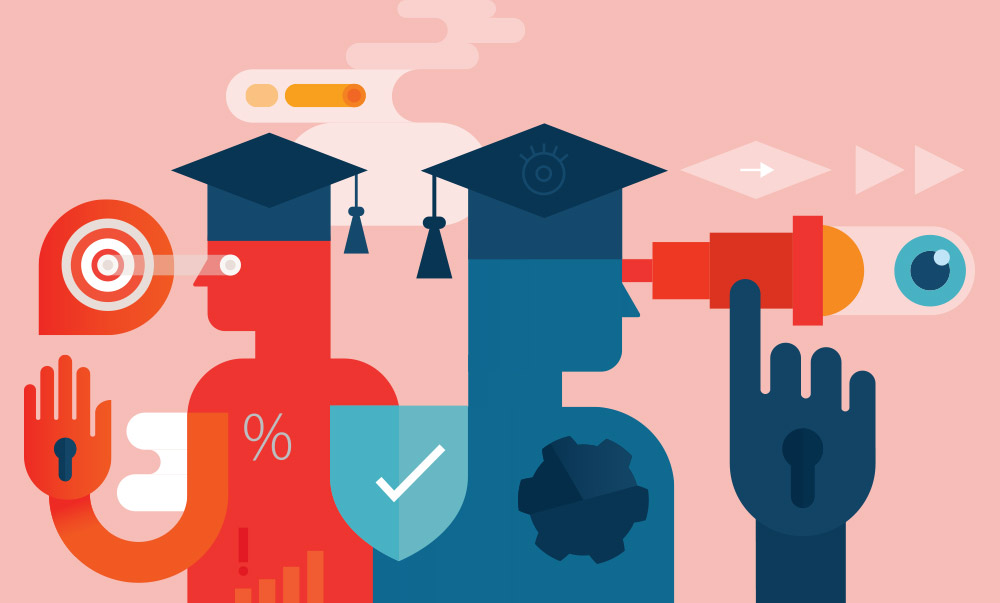
Trying to predict the future these days - Even mere months down the line - might be a fool's errand. This year’s NUS Commencement presents a case in point. Having postponed the event in 2020 due to the ongoing pandemic, NUS was gearing up for in-person Commencement ceremonies for both the Class of 2020 and the Class of 2021, from 17 June to end-July 2021, with safe management measures in place. However, the spike in community cases in late April and the reimposition of restrictions on large gatherings forced the University to make an about-turn. On 20 May, NUS President, Professor Tan Eng Chye (Science ’85) announced “with a heavy heart” that the event would be held online instead.
Many more examples abound of changes to the university experience in the wake of COVID-19
— both in terms of the academic curriculum and mode of delivery, as well as campus life. The pandemic has prompted higher education institutions all over the world to reassess and redouble their efforts to help students continue to learn and prepare for an as-yet-undefined future. On the social side, students and administrators are reinventing campus events and activities to suit the current situation, without sacrificing conviviality. Universities are also re-examining their alumni engagement strategies to ensure that, despite the crisis, alumni ties are not broken.
At NUS, faculty and staff were already making moves to adapt to the new economy well before the pandemic, such as launching new degree programmes and focusing on lifelong learning initiatives. COVID-19 has upped the pace of change, and made undeniable the fact that universities cannot stay still if they wish to stay relevant.
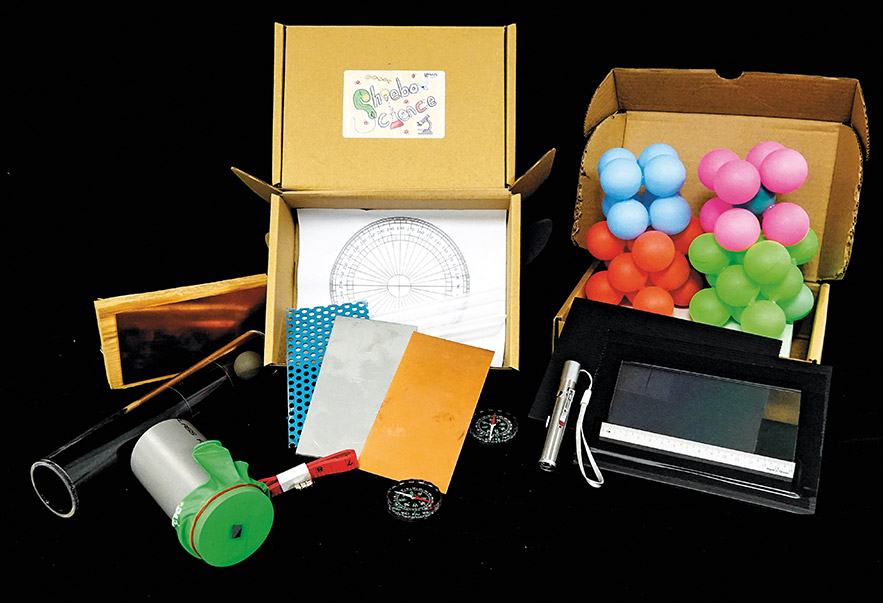
Remote Yet Connected
Within the immediate aftermath of the COVID-19 outbreak in Singapore, one of the first things on people’s minds was how to facilitate a smooth transition to home-based learning. NUS’ previous forays into technology-enhanced learning — such as massive open online courses (MOOCs) and ‘flipped classrooms’ — proved fortuitous as classes went fully online, and video conferencing software like Zoom was adopted en masse.
Faculty members got creative in thinking of ways to keep students engaged during online classes. In one example, Professor Sow Chorng Haur (Science ’91), Head of NUS’ Department of Physics, came up with the idea of sending shoebox-sized kits containing lab apparatus to students’ homes so that they could conduct experiments together during Zoom tutorials. One such kit — made up of a compass, magnet, ruler, metal plates and other items — allowed students to measure magnetic fields with the aid of a mobile app. In another kit for a module on solid state physics, ping pong balls were used to create 3D arrangements of atoms. A small number of kits were even shipped to international students in Indonesia, Sri Lanka and China, who chose to stay in their home countries amid this global health crisis.
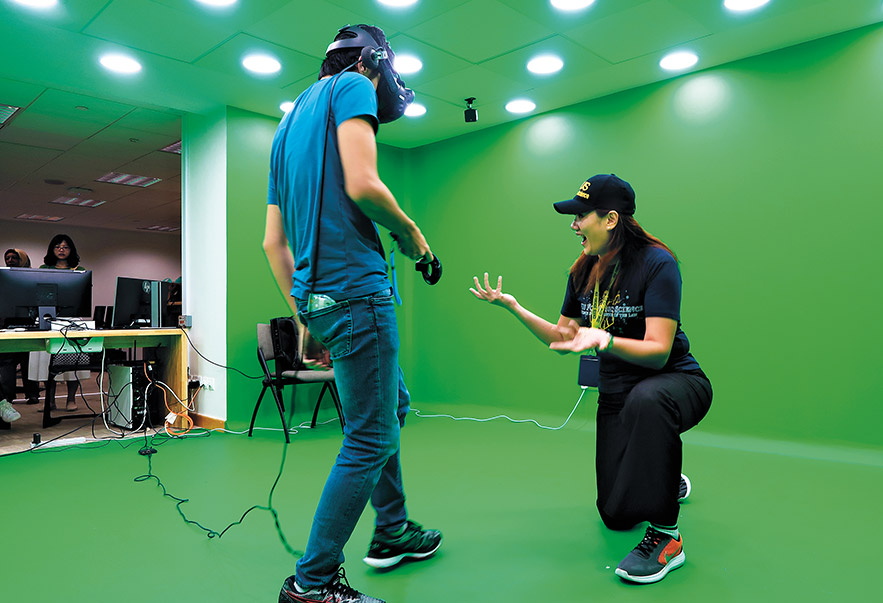
Although it was not possible to conduct certain experiments at home for safety or practical reasons — such as those requiring the handling of chemicals or bulky lab equipment — the kits livened up online classes by bringing in a hands-on component. “Instead of just logging in and listening to me explain or demonstrate concepts, students could conduct the demos themselves. It made lab sessions more interactive,” says Prof Sow. Having observed that students could better see demonstrations involving small items via Zoom compared to in a large lecture theatre, he is even considering blending online and face-to-face instruction when things eventually return to normal.
Other digital innovations that have made a big splash in the past year — and boosted experiential learning — include virtual reality (VR) and augmented reality (AR). Associate Professor in Practice Stella Tan (Science ’98), Academic Director of NUS’ Forensic Science Programme, had already introduced both technologies in one of her modules in 2019. With VR, her team set up simulated crime scenes based on true cases for students to conduct investigations. AR, on the other hand, enabled students to ‘hold’ and manipulate 3D virtual evidence seized at the crime scene, and inspect blood spatter, fingerprints and small items of interest up close. “When the COVID-19 situation worsened, it was a logical move to incorporate these technologies into more modules to create an immersive experience for our students, even with remote learning,” says Assoc Prof Tan. Students could borrow the VR headsets, carry out investigations at home, and post the results online for group discussion. Not surprisingly, these technologies have gone down a treat with the students. VR and AR do away with the laborious physical process of setting up a mock crime scene and “bring an element of fun to serious topics”, she says. Given that courts such as those in Beijing have begun using VR to walk judges and juries through a crime scene or to see things from an eyewitness’ vantage point, familiarity with such tools may prove useful once students start their careers too.
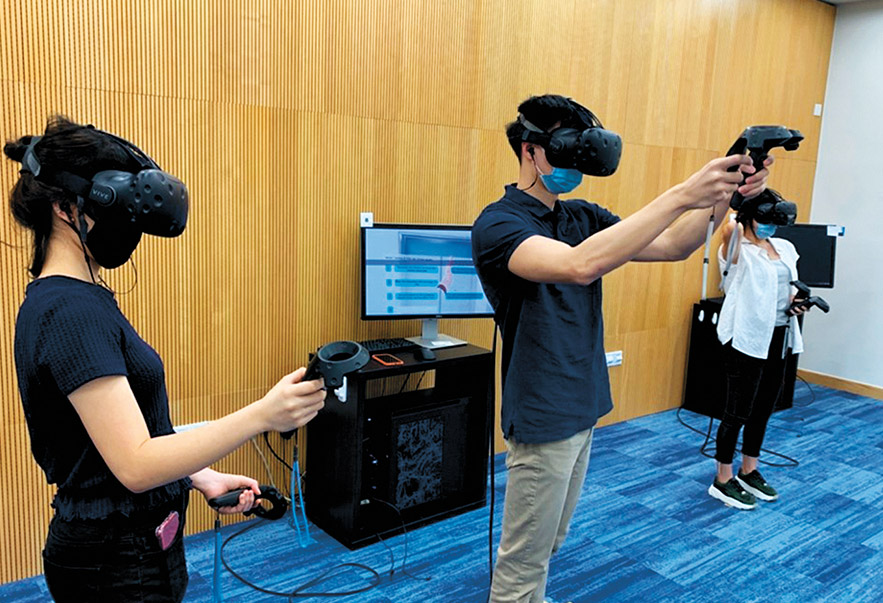
NUS Yong Loo Lin School of Medicine is also using VR to revamp its curriculum. With medical students on surgical rotation unable to go on clinical rounds due to COVID-19, the School debuted a new VR gaming system last year called PAtient Safety aS Inter-Professional Training (PASS-IT). It instantly transports users to a simulated hospital environment to teach them about patient safety in the operating theatre. NUS Medicine has, in fact, a number of digital transformation projects under its belt. These include Create Real-life Experience And Teamwork In Virtual Environment (CREATIVE), a virtual simulation programme developed in 2017, where students from different health professions utilise online avatars to take part in a multidisciplinary ward round; and Virtual Integrated Patient (VIP), an artificial intelligence (AI) chatbot piloted in 2020, which employs a random patient generator to hone students’ communication skills and competency in medical history-taking and diagnosis.
Associate Professor Alfred Kow (Medicine ’03), Assistant Dean (Education) of NUS Medicine and one of the educators spearheading PASS-IT, believes the pandemic is a “major catalyst” in driving innovations in medical education. “Digitalisation enables the uniform implementation of training content and methods, which can be tracked objectively, and the milestones recorded accordingly. In addition, it allows students to practise in a safe environment before they enter the clinical setting,” says Assoc Prof Kow, who is also a surgeon at the National University Hospital. “Advanced technology will not replace human interaction; indeed, the sacred relationship between doctor and patient must be preserved,” he stresses. “However, technology can fill in the training gaps by reducing variability and allowing repeatability, thus enhancing competency in the long run.”
Blurring Disciplinary Boundaries
The widespread adoption of digital technologies is not just a tactic to enhance remote learning, but also emblematic of a longer-term trend underway in higher education: the shift to interdisciplinary learning. The Fourth Industrial Revolution has blurred the boundaries between the physical, digital and biological worlds, with technological advances such as AI, robotics and the Internet of Things fundamentally altering the way we live, work and relate to one another. Nowadays, at least some digital know-how is needed to hold down a job — just about any job, in any industry — and ensure career mobility.

Yet, if anything, cherishing that which makes us human is more important than ever. As NUS President
Prof Tan wrote in an opinion piece for The Straits Times on 8 January 2021: “[L]earning takes time and patience — not just in picking up the skills or content, but in the making of meaningful connections. These connections can be across domains and topics, across space and time, and across changing societal perceptions. But these connections are essential to make the learning personal for an individual. … The traits of curiosity, creativity and connecting the dots, as well as understanding oneself in society, will help people learn to be human, as well as earn a living.”
Within NUS’ Department of Communications and New Media (CNM), a curriculum review has been ongoing since 2017 to reflect rapid changes in media, including the rise of ubiquitous computing and AI, the datafication of society and culture, and the digitalisation of markets. The result is an integrated, interdisciplinary curriculum that balances depth with breadth. It imparts job-specific skills and domain knowledge, as well as transferable meta-skills such as creativity, teamwork and agility. Work-integrated learning is embedded through a 20-week Compulsory Internship Programme for third-year students. Moreover, at the state-of-the-art CNM Studio: Multimedia Production Makerspace, students from different disciplines can collaborate on game design, prototyping, video production and post-production, crisis communication simulation and other activities.
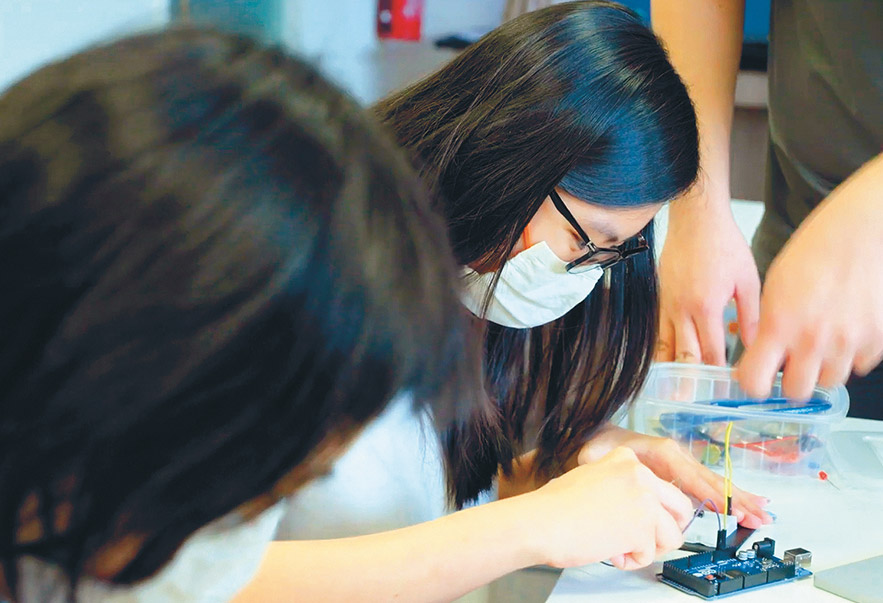
“The CNM major now integrates cultural studies, critical media studies, mass and computational communications, communication management and interactive media design,” says the Head of Department, Professor Audrey Yue. Popular modules include the revised Learning Innovation in the Digital Age and a new one called Sex in the Media. “Engaging the intersections of humanities, arts, social sciences and computing, we are the only department and programme in the Asia-Pacific region to focus on critical, creative, qualitative, quantitative and computational research and pedagogy.” Prof Yue adds, “In our post-pandemic world, digitalisation and communication will underpin all aspects of industry. Most importantly, the future of jobs will be hybrid — for example, hybrid media professionals with a broad range of skills in digital writing and production, online content creation, and social media marketing and analytics.” The revised curriculum will thus equip students to take on emerging job roles across the media and non-media sectors.
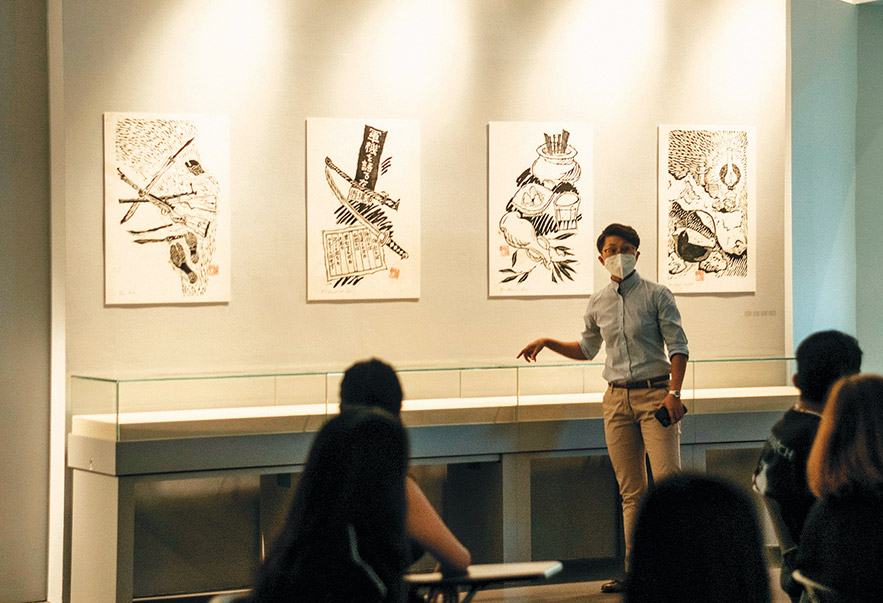
A Radical Reimagining
Perhaps the boldest step to date in NUS’ shift to interdisciplinary learning is the major restructuring of its faculties and schools. In December 2020, a new College of Humanities and Sciences (CHS) was established, bringing together the Faculty of Arts and Social Sciences (FASS) — which CNM is part of — and the Faculty of Science (FoS). Set to admit its inaugural cohort this August, CHS provides a carefully-curated Common Curriculum covering the humanities, social sciences, mathematics and sciences, following which students can choose any major, double major or minor, as well as elective subjects offered by either FASS or FoS.
By expanding their learning horizons, CHS students can gird themselves for a future of change and complexity, as reinforced by COVID-19. Speaking at CHS’ launch event, NUS President Prof Tan commented: “Through interdisciplinary education, students will learn to harness and integrate knowledge, insights, skills and experiences across disciplines and environments. They will not be afraid of taking on new disciplines, fresh challenges or unfamiliar environments. Our students will be able to understand various perspectives and be more proficient in presenting informed solutions to multifaceted problems.”
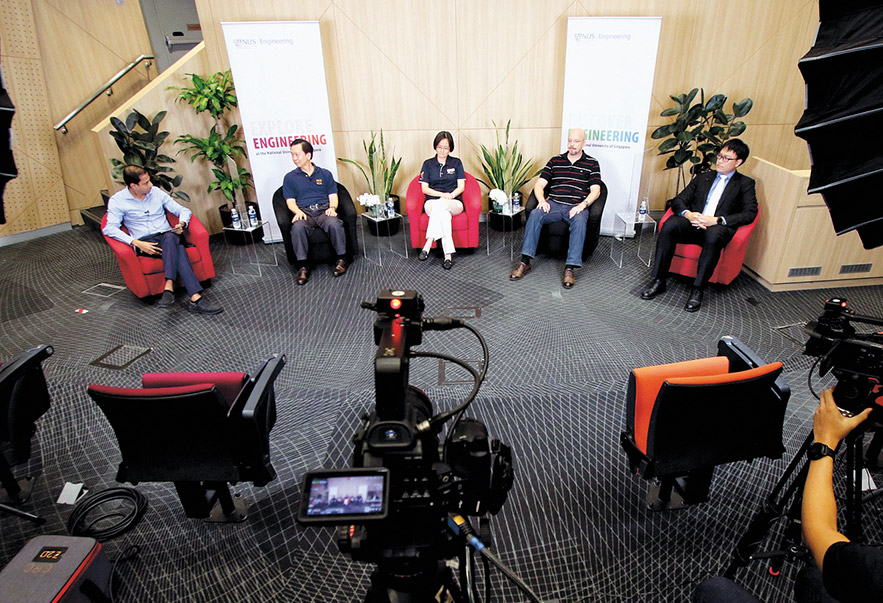
Likewise, starting in Academic Year 2021/2022, incoming freshmen at the Faculty of Engineering (FoE) and the School of Design and Environment (SDE) — except Real Estate students — will undergo a new Common Curriculum that bridges the two domains. Professor Ho Teck Hua (Engineering ’85), NUS Senior Deputy President and Provost, voiced excitement about the news when it was announced in February: “FoE and SDE have a lot in common. In our everyday life for instance, we are witnessing a convergence of engineering and design — sleek smart phones and consumer electronics, electric vehicles, as well as current net-zero and emerging net-positive energy buildings …. Therefore, our training for engineers, designers and built environment professionals must evolve.”
For FoE Dean Professor Aaron Thean, this curriculum upgrade will put students in a better position to address thorny issues relating to sustainability, liveability and — especially in a post-COVID world — healthcare. “Societal, environmental and technological challenges are clearly growing in complexity. There is a need for savvy engineers who have not only sound technical domain skills but also a good appreciation of design, communication and project management,” he tells The AlumNUS. “Our new programmes will help students in a competitive job market that is increasingly multidisciplinary, diverse and fast-changing.” Prof Thean does not rule out the possibility of one day establishing, like CHS, a College of Design and Engineering.
Keeping Camaraderie Alive
Outside the academic sphere, COVID-19 has also dramatically changed the student experience. Perks associated with campus life, such as meeting new people and taking part in different clubs and activities, have been significantly curtailed. Large-scale events have had to be postponed, scrapped or moved online. This year, NUS held an e-Open House — the online equivalent of NUS Open Day, one of the University’s biggest events — for the second time in a row from 27 February to 6 March 2021, during which the various faculties and schools took turns promoting their courses to prospective students.
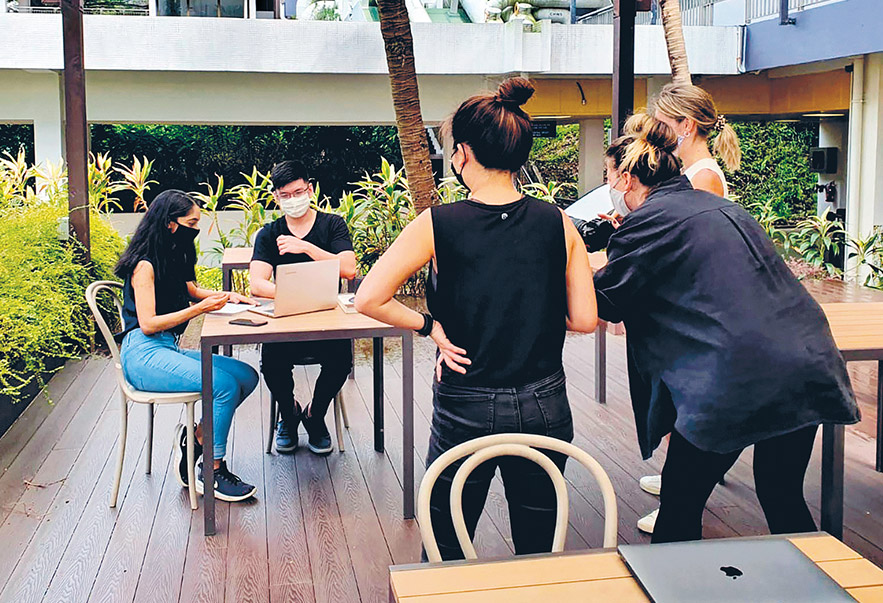
Naturally, the new FoE–SDE Common Curriculum featured prominently at FoE’s e-Open House. “Our new curriculum attracted significant interest from prospective students during the department sharing sessions, as well as the live panel discussions where professors and students took questions from the public,” says Ms Amelia Lim (Arts and Social Sciences ’18), an Assistant Manager (Communications & Outreach) at FoE, who was part of the event organising committee. “It was tough to ensure a smooth transition between the Zoom webinar platform and the live-streaming of panel discussions in the lecture theatre. But the sessions went smoothly.”
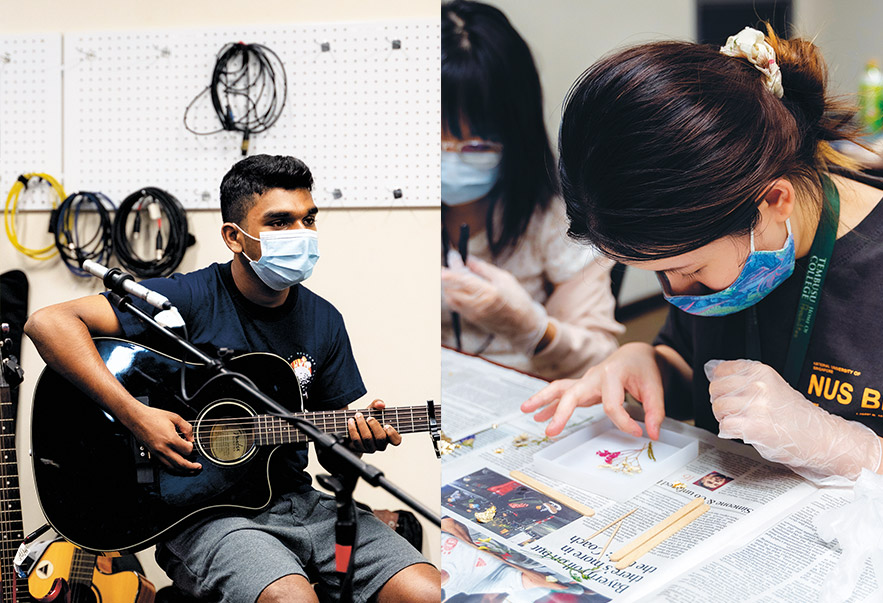
Those living on campus, who might be isolated in their dorm rooms and fighting loneliness, may be hit the hardest. At NUS’ Tembusu College, every effort was made to give students some semblance of residential college life amid the pandemic. Wherever possible, events such as the Tembusu Forum were held in hybrid format rather than completely online. This gave up to 50 students — especially first-year residents — a chance to attend the flagship event in person, while others tuned in via Zoom and posed questions to the guest speakers via Pigeonhole Live. For the most part, students could still enjoy daily activities such as meals with friends, late-night chats in the lounges and playing their favourite team sports, provided they adhered to the safe management measures.
There has been one upside to all this, according to Dr Kuan Yee Han (Engineering ’10), Senior Lecturer and Residential Fellow at Tembusu College. “While life on campus definitely took on a ‘new normal’, it encouraged students to think out of the box in planning events and activities.” For example, the bi-annual Tembusu Arts Week was conducted via Zoom or Twitch, with live-streaming of student performances. Students also produced virtual campus tour videos for the College’s e-Open House. Dr Kuan adds, “What is heartening is their creativity, positivity and determination. Going through this period together has given them an opportunity to bond through this unique experience.”
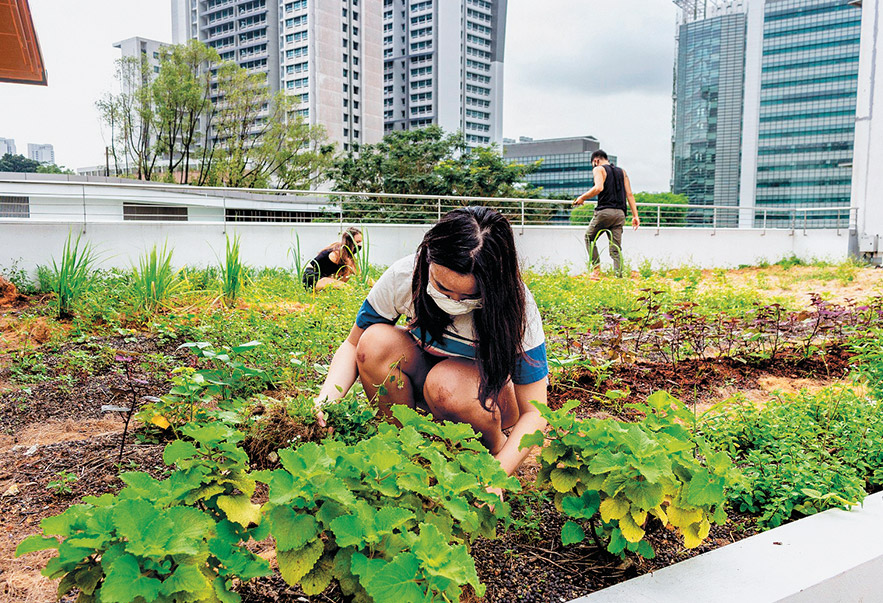
Such esprit de corps is also evident at Yale-NUS College, with its fully residential programme. “This has been a hard year, particularly for our international students who could not travel home to see their families. What has so impressed me is how the Yale-NUS community came together to make sure everyone felt cared for. The pandemic has brought out the best in them,” says Dr Trisha Craig, Vice President (Engagement) of Yale-NUS. For instance, one student volunteered to organise early-morning, socially-distanced yoga sessions at the courtyard of Saga College, as a way of supporting the community’s physical and mental health. New student organisations were also formed, such as the environmentally-minded Yale-NUS Farming Collective. Alongside this peer support, Yale-NUS staff have come up with ingenious ways to make virtual events more fun. The latest Yale-NUS Global Affairs Lecture in March 2021, which was held online and featured guest speakers from the United States, included an in-person viewing party for a small number of faculty and students. Snacks were also delivered to other watch parties hosted by Global Affairs alumni. “By putting our events online, we have massively increased our audience and global reach,” Dr Craig adds.
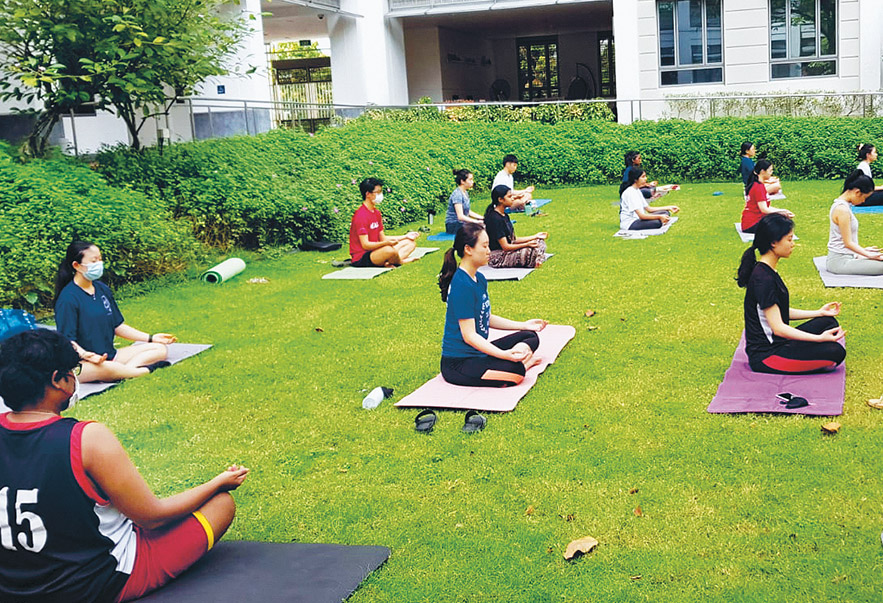
The Ties That Bind
Last but not least, alumni connections to their alma mater have been tested during this period. The NUS Office of Alumni Relations (OAR) responded by moving events online, such as its many workshops and talks, the popular Thirsty Thursdays and its annual Chinese New Year (CNY) Appreciation Dinner. As restrictions eased towards the end of 2020, OAR brought back its Film Festivals physical event series, albeit on a much smaller scale. In March, the Indian Film Festival 2021 took on hybrid form as each on-campus screening accommodated up to 50 guests, while many more watched the films virtually from the comfort of their homes. “The main challenge was ensuring the same level of engagement and interactivity that one would gain from physical events,” says OAR Director Mr Bernard Toh (Architecture ’84), citing “Zoom fatigue” as an ever-present concern. For the virtual CNY Appreciation Dinner 2021, guests had festive meals delivered to their homes and were treated to pre-recorded performances. Another worry was that senior alumni might be left out of the digital world. OAR linked the NUS Senior Alumni group with the Computing Alumni Association, who conducted physical workshops (with safe management measures) to teach them how to use Zoom. NUS Senior Alumni members were thus able to continue their monthly Tea & Chat and Sing-Along sessions via the platform.
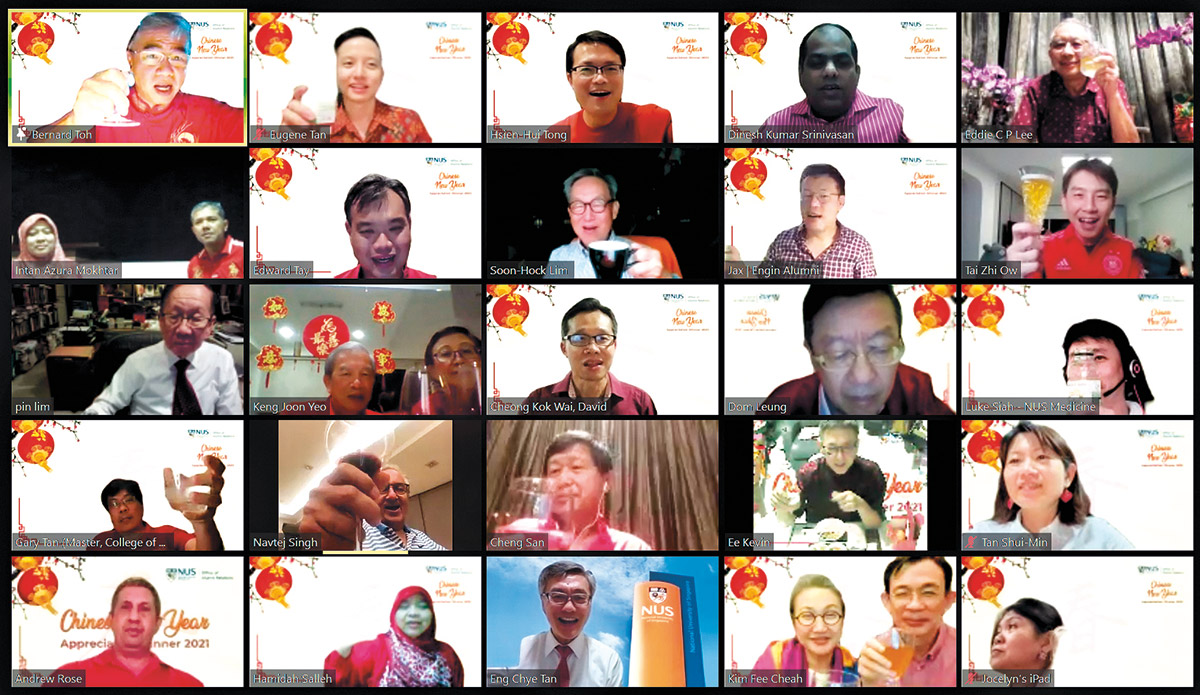
That said, there have been some positive takeaways as well. “As a bonus to using Zoom as a medium of engagement, we were able to better engage with alumni based overseas. We are especially thankful for dedicated alumni who, despite the time difference, volunteered their time and expertise to speak at our educational and enrichment workshops,” says Mr Toh. “The Chairpersons of our Overseas Chapters also gathered online every six months to exchange best practices, discuss common issues, network and lend one another support.”
In fact, there is much more to be said now for maintaining the alumni-university relationship. The global jobs crisis wrought by COVID-19 has shone a brighter light on the importance of lifelong learning, as upskilling or reskilling oneself through continuing education and training (CET) is the only way to remain in the workforce. Learning does not, and should not, stop after graduation; it should be embraced all through life. “COVID-19 has accelerated the digitalisation of business processes and financial transactions, requiring individuals to be trained for new job scopes. At the same time, the downtime in many industries has allowed organisations to send their staff for retraining,” says Mr Suresh Punjabi, Associate Dean (Executive & Professional Development) of NUS’ School of Continuing and Lifelong Education (SCALE). “Those who have been made redundant also need new skills and knowledge so that they will be eligible for roles at companies that are hiring.”

Interest in SCALE’s lifelong learning programmes has increased in the past year, notes Mr Punjabi. Some predate the pandemic, including the NUS CET500 catalogue of skills-based, industry-relevant courses for the public, and the alumni-only NUS Lifelong Learners programme. SCALE now also offers extra support to professionals and fresh graduates affected by COVID-19. Under the NUS Resilience & Growth (R&G) initiative, both the Class of 2020 and the Class of 2021 are given vouchers to offset the cost of CET courses. Meanwhile, NUS SGUnited Skills (SGUS) is a full-time training programme, launched in collaboration with SkillsFuture Singapore, to help jobseekers improve their employability.
It is anybody’s guess how long the pandemic will last. Staff, students and alumni all miss gathering in person and being in each other’s company. Nonetheless, the changes we have witnessed — the proliferation of tech-enabled learning, the cross-cutting of disciplines, the increased attention on lifelong learning, etc. — will certainly figure in the future of higher education, long after COVID-19 has ended. As long as NUS keeps up its change momentum and makes sure that students and alumni can handle whatever life throws at them, the University will continue to stand on firm ground.
This story first appeared in The AlumNUS (Issue 126, Jul-Sep 2021).

